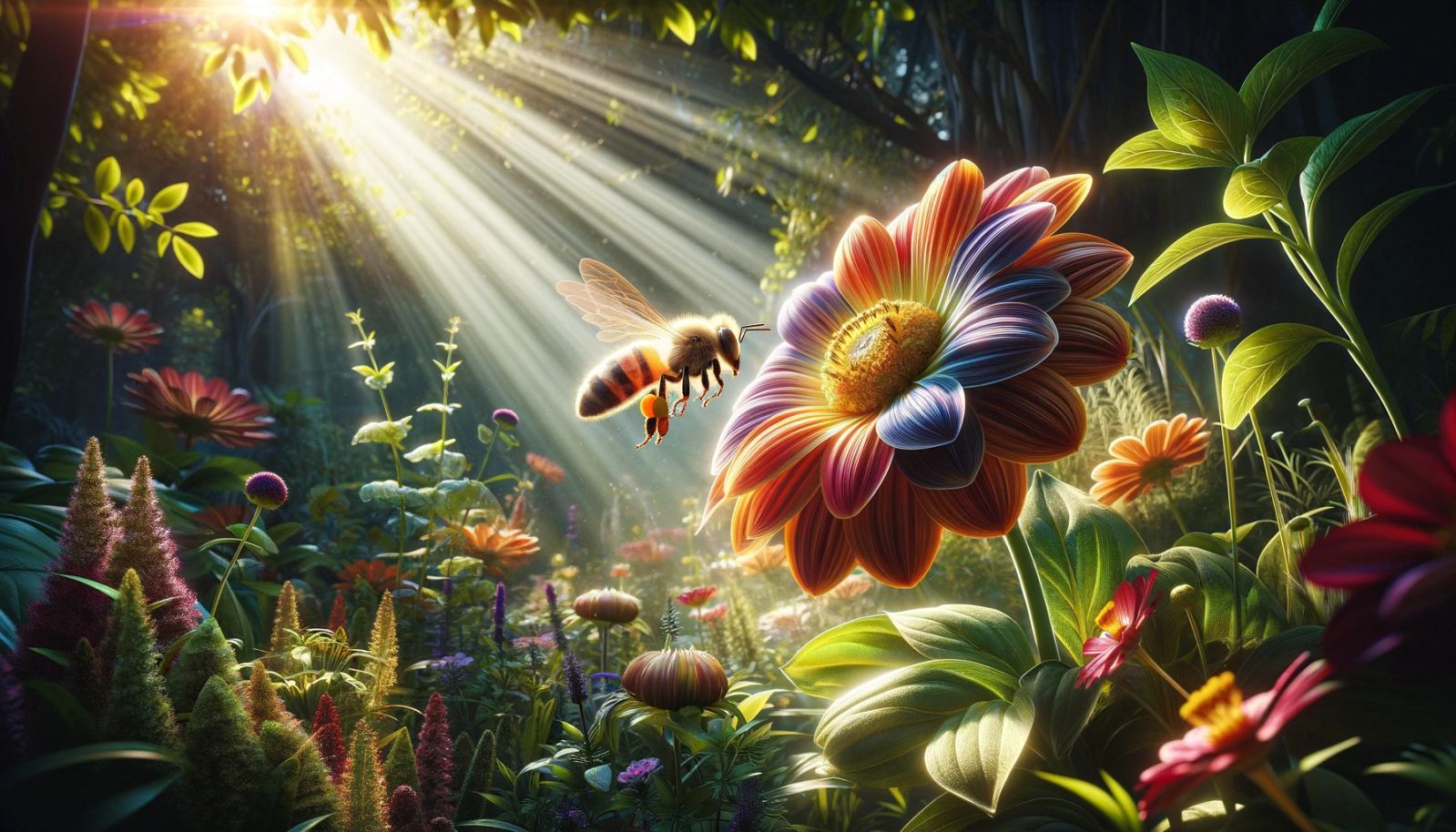The Chicken or The Egg Equivalent: The Flower or The Insect?
Follow us on Google News (click on ☆)

Researchers examined the visual environments of bee ancestors, measuring the light reflected by current flowers as well as by rocks, soils, and other natural elements. Using computer simulations, they reconstructed the ancestral visual environment at the time of the first flowers' appearance.
It appears that the color vision of insects, based on photoreceptors sensitive to ultraviolet, blue, and green, predated the evolution of flowers. This ability already allowed them to navigate and feed efficiently in their environment. When the first flowering plants appeared, the colors of the flowers likely evolved to adapt to this ancient visual system, making the flowers more visible and attractive to the ancestors of bees, who became their most effective pollinators.
The researchers also collected samples of natural materials in Australia, a geologically ancient continent, to measure their reflective properties. These data allowed them to create a database simulating the visual backgrounds of the first flying insects.
The analysis of marks, or sudden changes in the intensity of reflected light, showed that flowers pollinated by bees are particularly prominent, standing out sharply against natural backgrounds. This visual prominence confirms that flowering plants evolved to be easily noticeable by bees, thus facilitating pollination.
Moreover, flowers pollinated by birds have developed marks towards longer wavelengths, adapted to the vision of birds that can perceive colors that bees do not easily distinguish.
This research highlights the crucial importance of bees in the evolution of the diversity of flower colors. It also underscores the urgency of protecting these pollinators and their habitats to preserve ecosystems and food production systems.